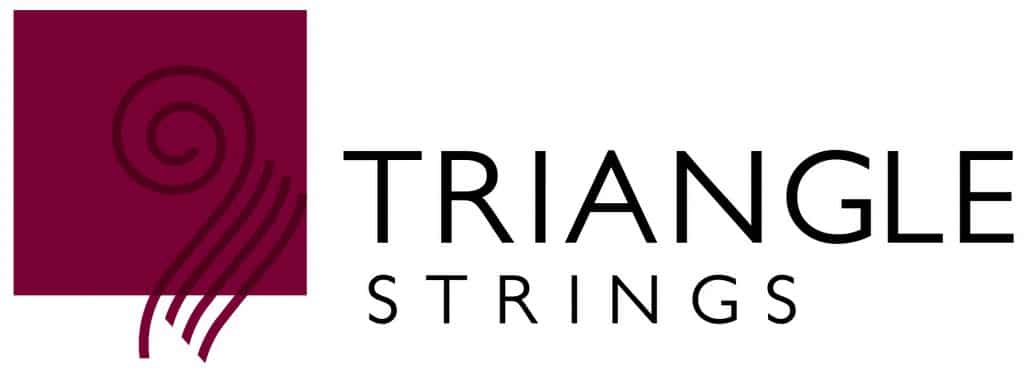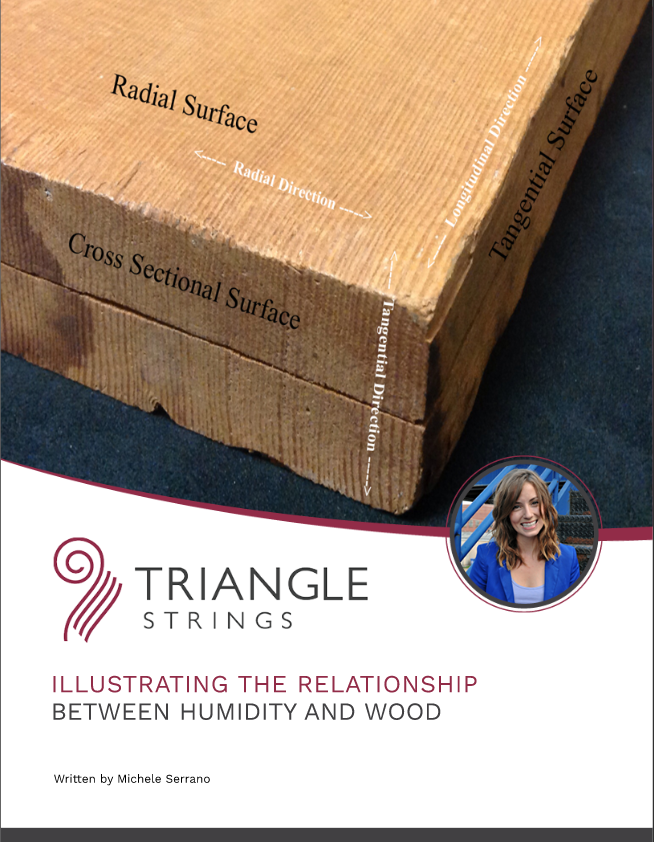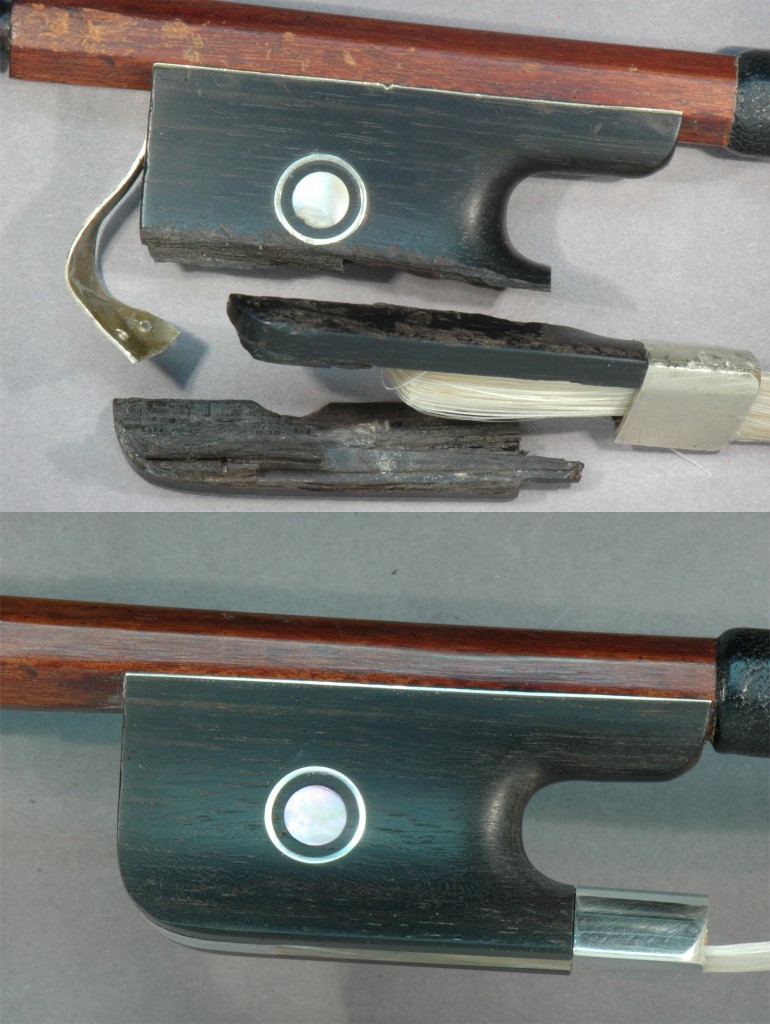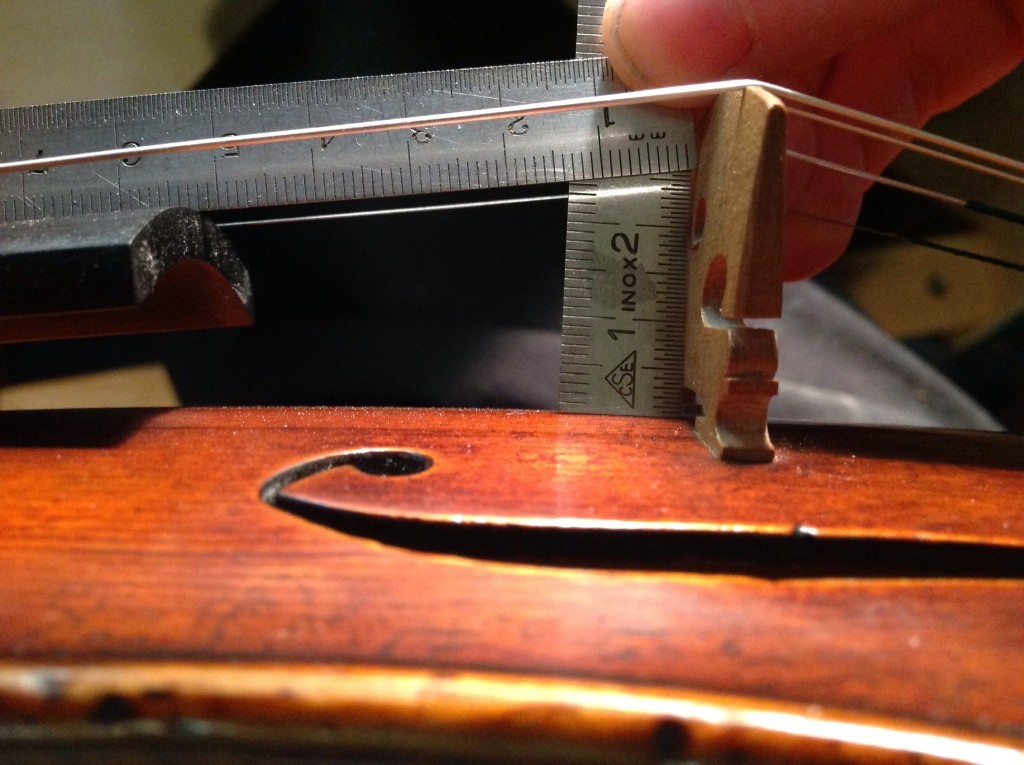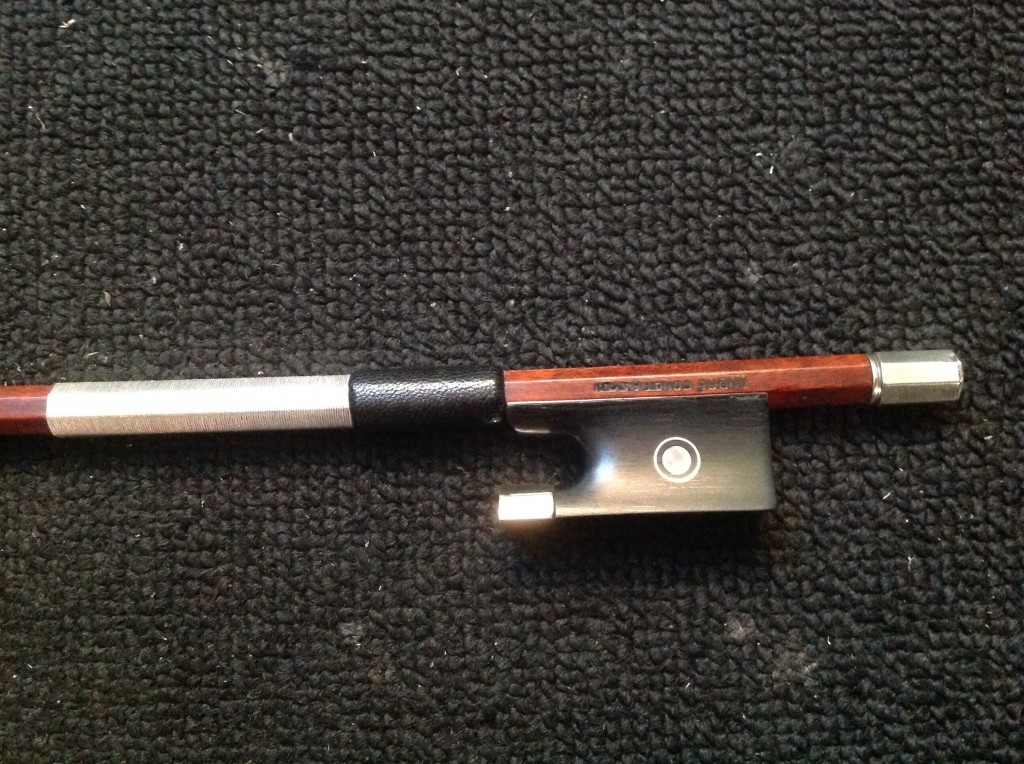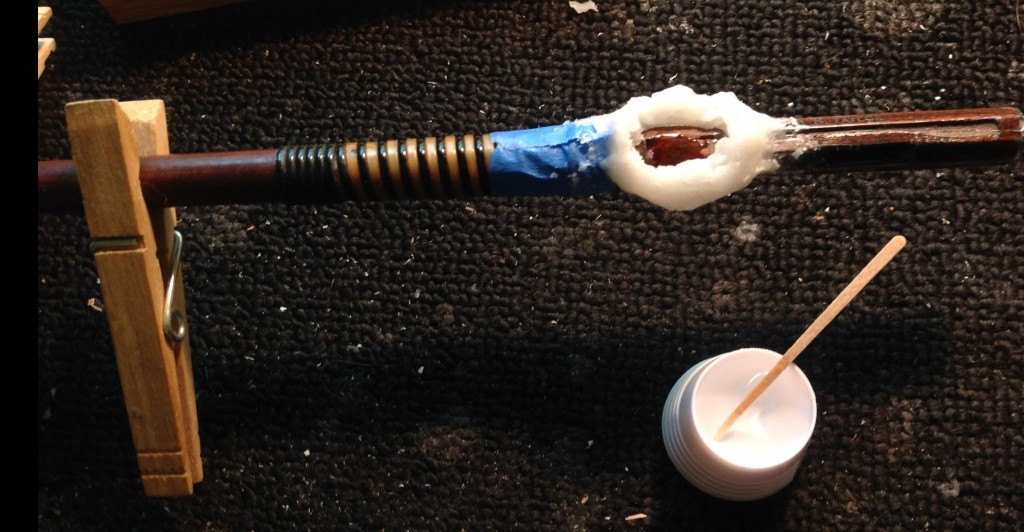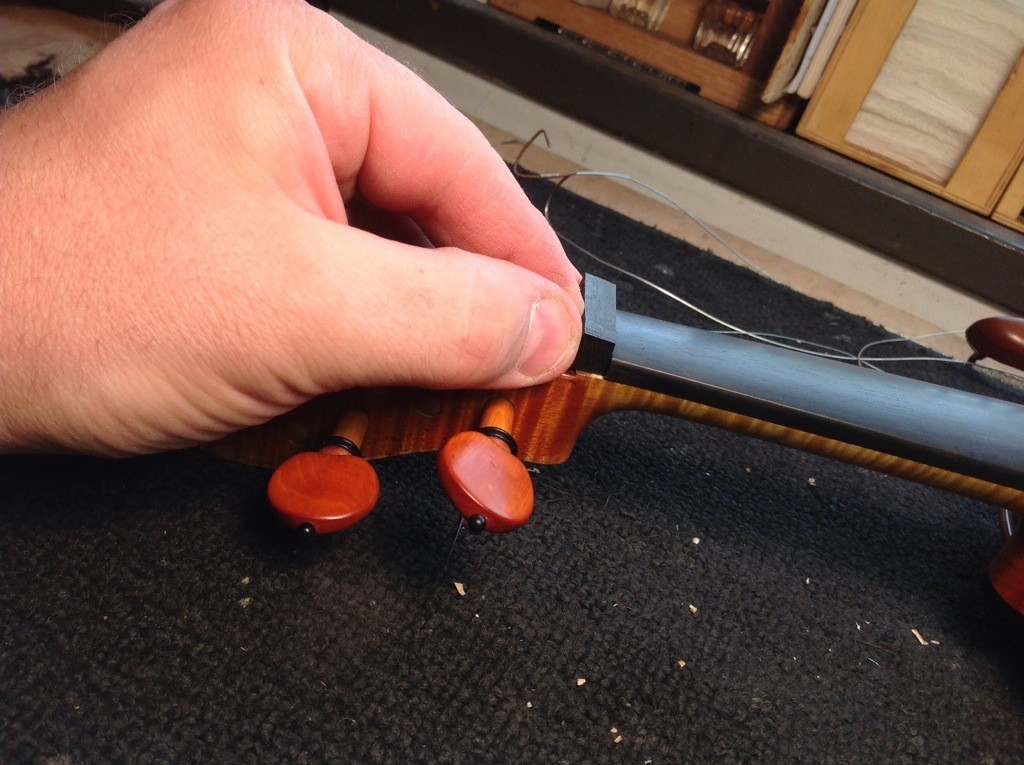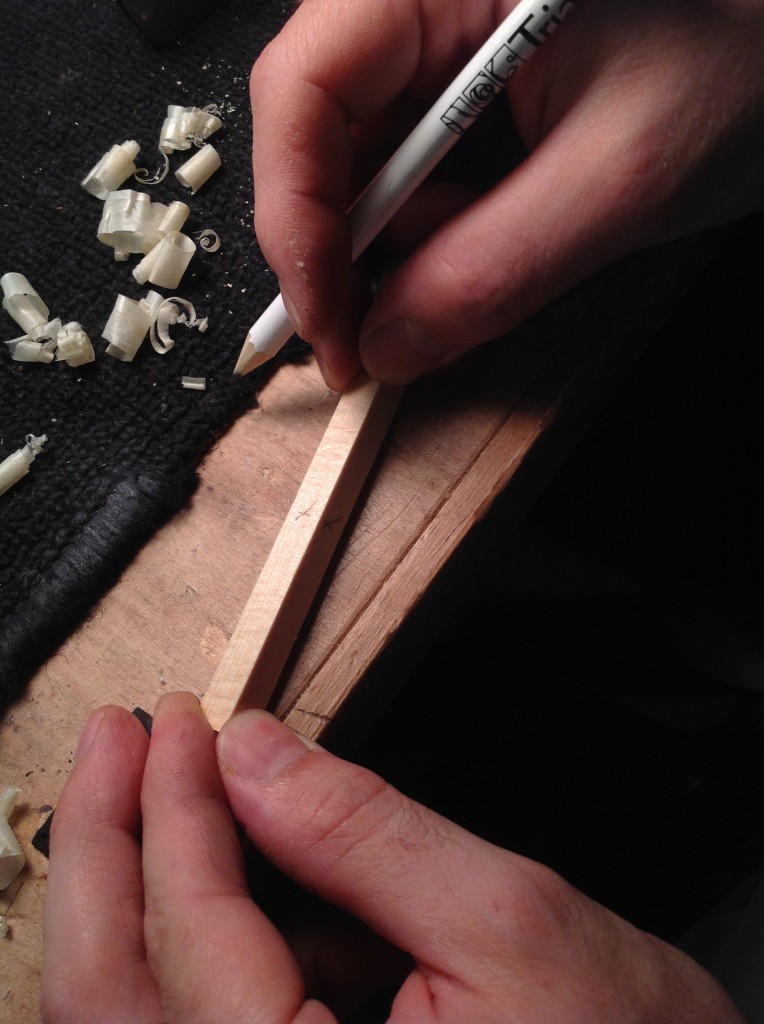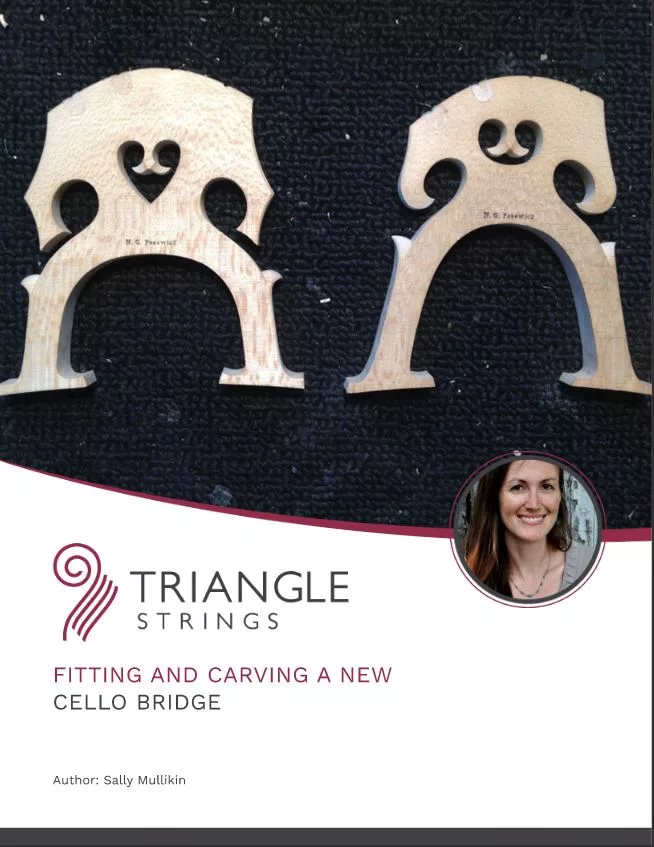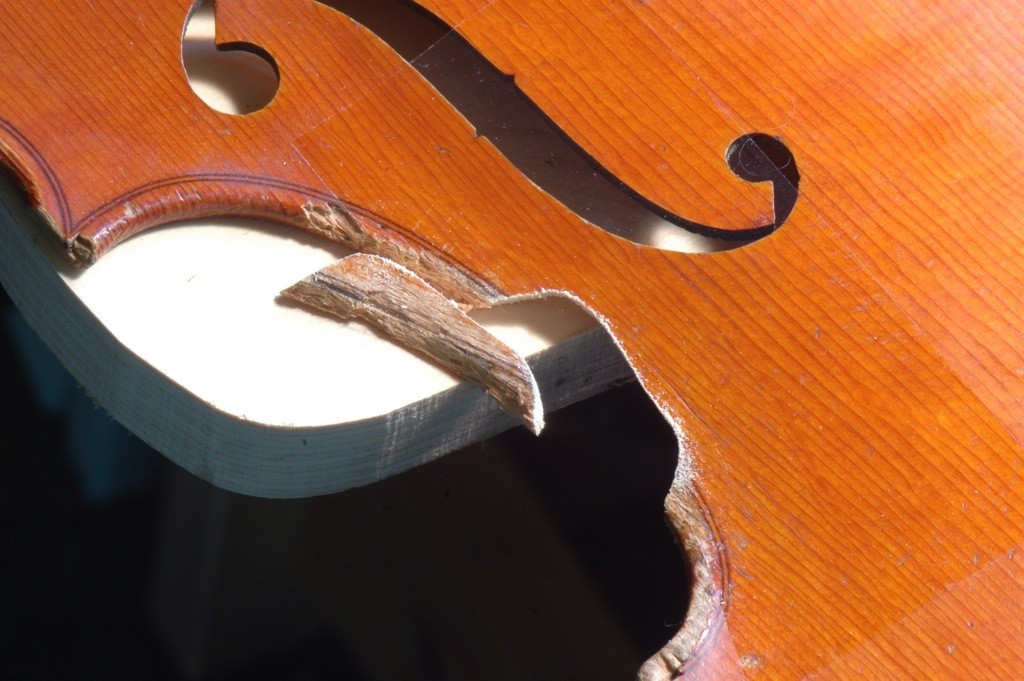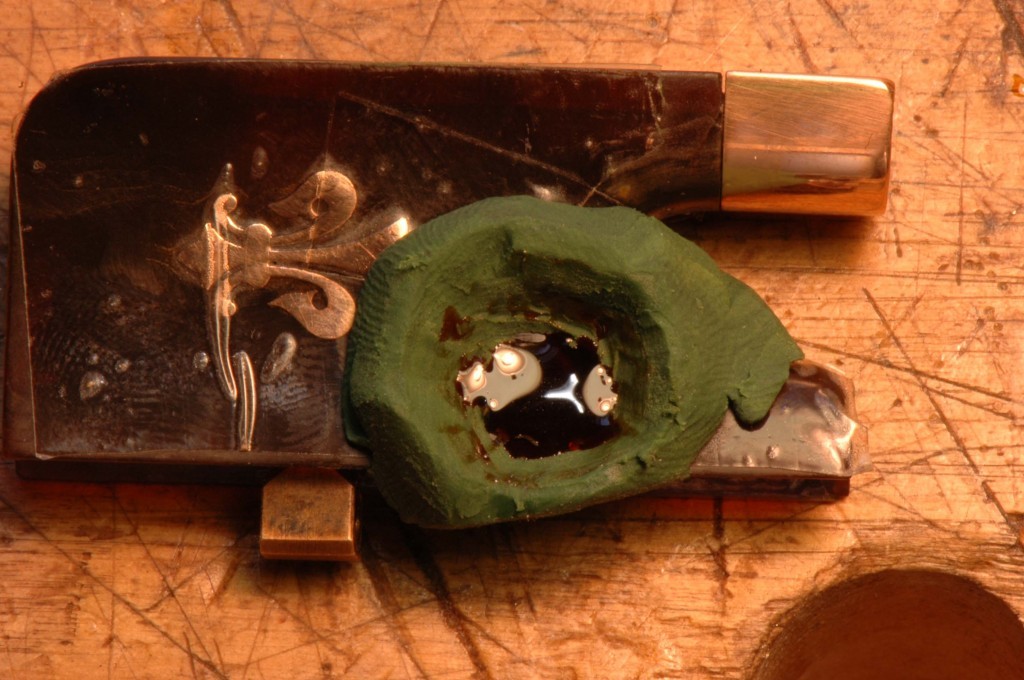Category Archives: Techniques
A cheval is a form of wood replacement. Often, due to a bow frog’s small size, an entire section of wood has to be replaced with new wood to reinforce the structure and to supplement missing wood. Traditionally, a cheval is performed by planing away original material and replacing it with new wood. A rounded cheval maximizes the surface area […]
This is a guide to a common adjustment, especially in times when instruments experience higher than average humidity. Excess moisture in the air can cause the spruce top of an instrument to swell, most notably in a transverse direction (perpendicular to the grain). Since the plate is fixed around the edges, it has nowhere to go […]
The thumb leather can help you grip the bow, but it can also make your bow more stylish. In this post I will list the materials you will need to make a thumb leather, show you the different kinds of leathers that we use in the shop and describe their attributes, and give you step-by-step […]
Often, a musician will wear a divot in the bow where the thumb contacts the stick. The use of the optical epoxy to fill the worn area is a noninvasive and reversible restoration and looks good as well. MATERIALS AND TOOLS -good-quality, non-stretching transparent packing tape – modelling clay or candle wax – 1 dental dappen dish – […]
The nut is a piece of the setup process that many people overlook. However, it is important to get it right. A well made nut allows the strings to flow unimpeded into the pegbox. It affects the feel and playability of the instrument and is one of those details that shows the competency of the […]
Why bother making a sound post? Making a sound post for every instrument allows you to constantly be familiar with your tools and your hands, and with each one you are honing your skills for other tasks that demand accuracy. It’s also quality control for your sound post stock. If you buy sound post stock it […]
This viola came in with some serious damage to the treble c-bout edge due to the bow hitting it. The purpose of the conical patch is to use the existing wood and raising it into a position that is past the damage so that the joint is almost invisible. In this case in particular, there […]
As published in the IPCI Book. The conventional manner to repair damaged tortoiseshell has been to fill the frog with small pieces of tortoiseshell cut from combs, oriental fans, or other flea-market finds and glue the pieces into place using CA glue. However, results of this time-consuming method varied and, today, tortoiseshell has become very […]
